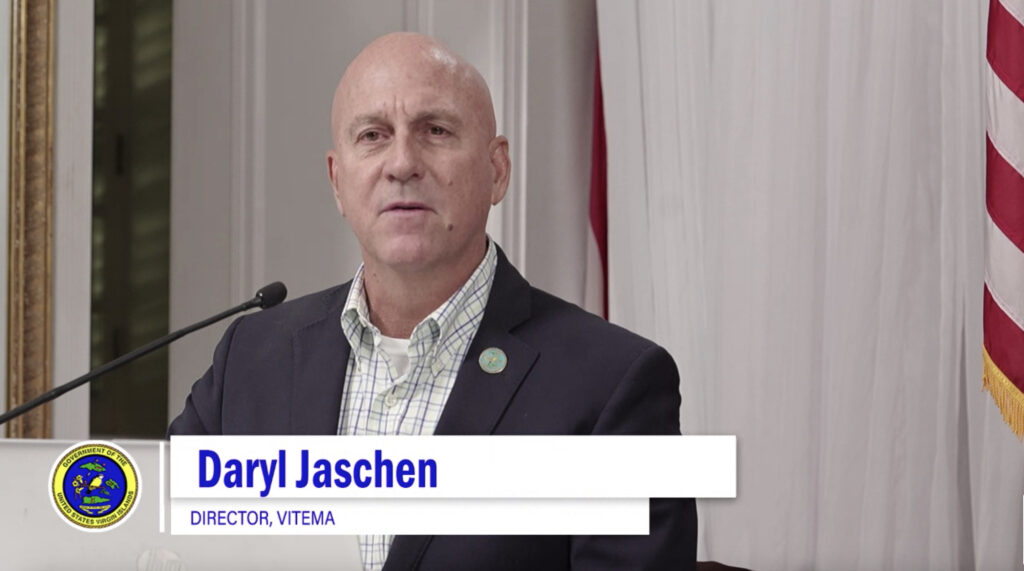
If environmental permits are issued as expected, refinery owners will likely start removing dangerous chemicals stored at the oil-processing facility on St. Croix’s south shore in mid-March, government officials said Monday.
The federal Environmental Protection Agency plans a virtual town hall with St. Croix residents with concerns about the work for Wednesday, from 6 p.m. to 8 p.m., said Daryl Jaschen, director of the Virgin Islands Territorial Emergency Management Agency. Jaschen said to monitor VITEMA’s Facebook page for more information on the meeting.
VITEMA formed a task force to oversee removal of the hazardous chemicals, he said, with St. Croix Local Emergency Planning Committee, which reactivated in May 2021 after the refinery sprayed nearby homes with oil. The task force will work in concert with the EPA, the Virgin Islands Emergency Response Commission, the federal Occupational Safety and Health Administration, and current refinery owners, Port Hamilton Refinery, to monitor removal of the hazardous chemicals.
The Committee has been meeting with the EPA and Port Hamilton bi-weekly since October 2022, Jaschen said.
The refinery houses more than 40,000 pounds of anhydrous ammonia, which is poisonous, flammable, and highly corrosive.
EPA ordered the chemicals removed in December 2022 after an inspection found facilities storing the chemicals in dangerous disrepair. Piping and valves used to handle more than 37,000 pounds of liquified petroleum gas “are in an advanced state of corrosion and disrepair,” according to the EPA, which found similar potentially dangerous maintenance problems in September 2022.
EPA inspectors identified safety concerns, including corrosion of piping and valves, that could result in a chemical release or fire, particularly in areas where there are large quantities of ammonia, liquified petroleum gas, amine, and hydrogen sulfide. Federal inspectors warned a release of anhydrous ammonia could be catastrophic and affect people outside the refinery’s fencing.
Jaschen said as many as eight non-stop air monitoring stations will be up and running around the plant. Results of the monitoring will be available at a website soon to be online, he said. Jaschen was not able to say how long it would take to remove the chemicals.
The EPA has mandated Port Hamilton make repairs to the refinery before the chemicals are removed, Jaschen said.
Port Hamilton plans to remove the anhydrous ammonia first by transferring it to specially-designed shipping containers, he said.
“Contractors will then purge and treat the remaining ammonia from the system under close supervision to prevent the vapors from escaping,” Jaschen said.
Liquified petroleum gas will be removed to shipping containers and depressurized. Remaining liquified petroleum gas will be destroyed with a thermal oxidizer — a type of incinerator. Nitrogen will remove any residual hydrocarbon vapors from the refinery’s systems, according to the plan.
Amine liquid containing hydrogen sulfide will be transferred to shipping containers and moved off island.
Removal of the chemicals cannot start without permits from the Virgin Islands Department of Planning and Natural Resources, Jaschen said. He was unsure how much money Port Hamilton was committing to the cleanup or how it was raised.
Gov. Albert Bryan Jr. has been highly critical of the EPA’s involvement in the refinery’s shutdown and restart effort, saying the Agency has acted improperly and with an overly heavy hand.
Bryan said Feb. 9 that, without a swift restart, the refinery could become an even bigger health hazard.
“God forbid lawsuits start, this person suing that person. That thing could be rusting away there for 20 years before anything ever happens. Think about it rusting away and us having to have another storm and all that debris flying around. I tell the EPA all the time, you’re pushing for a cleaner environment but you’re going to end up having a worse one if that thing is just rotting away unattended,” Bryan said.
“We’re going to be stuck with the problem,” he said. “I know there are some people in our community who don’t want to see the refinery open up. But that thing is not going to be cheap to take down. And it’s going to take a while to get it down, so I look at both sides of it.”


